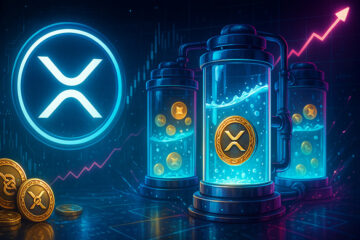Ripple has partnered with Wormhole, a cross-chain messaging protocol, to bring multichain support to the XRP Ledger (XRPL) and its upcoming Ethereum Virtual Machine (EVM) sidechain.
According to the June 26 statement, the integration will introduce advanced functionality to the XRPL and allow assets and data to flow freely between it and over 35 other blockchain networks.
This move follows a series of recent upgrades to the XRP Ledger, including the release of version 2.5.0 of its core software. These changes aim to boost performance, enhance support for institutional tools, and ensure regulatory alignment as blockchain adoption grows.
Expanding XRPL’s ability
According to the statement, the Wormhole integration adds new capabilities to an already established ledger known for fast transactions and native asset issuance.
The move would allow developers to send XRP, IOUs, and new token types like Multi-Purpose Tokens (MPTs) to other supported blockchains. They’ll also be able to trigger smart contract functions on external networks using cross-chain data inputs.
David Schwartz, Chief Technology Officer at Ripple, said interoperability is critical to XRPL’s evolution.
He explained that creating bridges between chains allows the blockchain network to expand its reach without compromising on security or performance. He added that the integration will support wider adoption by making it easier to move value across networks.
The firm stressed that breaking down the barriers between chains is critical to making blockchain infrastructure more usable for institutions and application developers. It added that the partnership will enable cross-chain messaging, token transfers, and the launch of multichain digital assets.
These features will support emerging use cases tied to DeFi, institutional blockchain services, and tokenized real-world assets (RWAs).
Meanwhile, Ripple’s broader strategy focuses on positioning XRPL as a flexible and secure alternative to dominant networks like Ethereum and Solana, particularly for use cases involving smart contracts, tokenization, and cross-chain applications.
 Bitcoin
Bitcoin  Ethereum
Ethereum  Tether
Tether  XRP
XRP  USDC
USDC  TRON
TRON  Lido Staked Ether
Lido Staked Ether  Dogecoin
Dogecoin  Figure Heloc
Figure Heloc  Cardano
Cardano  WhiteBIT Coin
WhiteBIT Coin  Bitcoin Cash
Bitcoin Cash  Wrapped stETH
Wrapped stETH  Wrapped Bitcoin
Wrapped Bitcoin  USDS
USDS  Wrapped eETH
Wrapped eETH  Binance Bridged USDT (BNB Smart Chain)
Binance Bridged USDT (BNB Smart Chain)  Chainlink
Chainlink  Monero
Monero  LEO Token
LEO Token  WETH
WETH  Zcash
Zcash  Stellar
Stellar  Hyperliquid
Hyperliquid  Ethena USDe
Ethena USDe  Coinbase Wrapped BTC
Coinbase Wrapped BTC  Litecoin
Litecoin  Sui
Sui  Avalanche
Avalanche  Hedera
Hedera  sUSDS
sUSDS  Shiba Inu
Shiba Inu  USDT0
USDT0  Dai
Dai  Uniswap
Uniswap  PayPal USD
PayPal USD  Canton
Canton  Mantle
Mantle  Cronos
Cronos  World Liberty Financial
World Liberty Financial  Toncoin
Toncoin  Ethena Staked USDe
Ethena Staked USDe  Polkadot
Polkadot  USD1
USD1  Aave
Aave  Rain
Rain  Bitget Token
Bitget Token  MemeCore
MemeCore 



